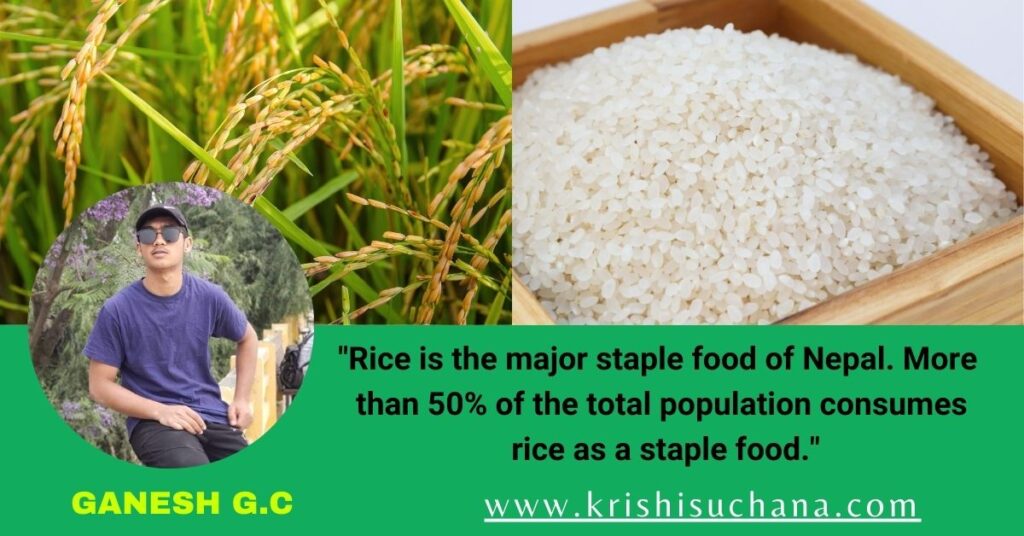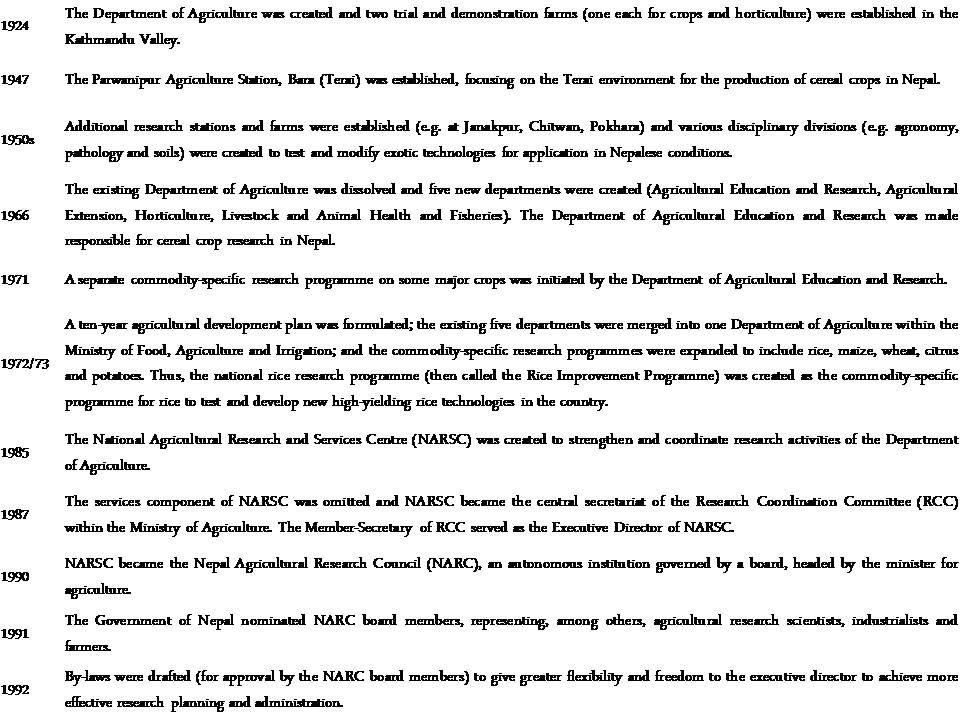Rice – A Major Cereal Crop in Nepal

Introduction:
Cereal crops belonging to the family Graminaceae, are plants used as staple food dominantly for human & feed for animals; producing grains used for food, feeds, seeds & industrial good production. The fruits of cereal are caryopsis type (single seeded). Rice, Wheat, Corn/Maize, Barley, Millet, Sorghum, Oat and Rye are some examples of cereal crops.
Rice is the major staple food of Nepal. More than 50% of the total population consumes rice as a staple food. Rice contributes around 7% to the National GDP & around 20% to the agricultural GDP and above 75% of the working population is engaged in rice farming. Cereals contribute about 90% of the total calorie intake where 50% of this comes from rice individually. Rice provides 79% carbohydrates, 7-8% protein, 2-2.5% oil, 0.8% fiber & 5.9% ash. Moreover, rice is a major source of vitamin B complex.
Opportunities and importance of Rice cultivation in Nepal
Agriculture provides livelihoods for 68% of Nepalese population. Besides generating employment, agriculture supports national economy by contributing 33% in GDP where cereal crops like Rice, Wheat, Maize jointly accounts 30.92% to Agricultural GDP (MoAD 2015). Nepal has diversities of climate to favors the varieties of rice species. Varieties such as Sukkha Dhan-I, Sukkha Dhan-2, Sukkha Dhan-3 can be grown in drought condition, while Swarna sub-I, Samba masuli Sub-I can be grown in submergence condition, similarly Khumal-2, Khumal-3 can be grown in Mid Hill. Janaki, sabitri is the best grown varieties in Terai whereas, Chandannath-I & 3 are best suitable for highest altitude like Jumla valley.
Until 1980, Nepal was one of the rice exporter for South Asian Countries but currently there is unbalanced demand and supply ratio of rice and its seeds with high demand & limited supply; seemingly export potentials at present.
Government of Nepal has also formulated different strategies regarding National Rice polices and strategies. Many structural changes which occurred in the agricultural research institutions of Nepal between 1924 and 1992 are presented in detail:

Besides human needs, rice grain is used for cattle & poultry along with broken rice (kanika). Straw of rice is one of the major fodder used as hay for cattle. Straw can also be used for mushroom production as well as for bedding materials for human and animals.
From cultural & religious view, rice is the integral part of Nepalese rituals. Rice is used for making tika while paddy seedling itself for jamara in occasion of Dashain. Hindu funeral rituals where the departed souls are offered with pindas, are made from boiled rice. Boiled rice, beaten rice/rice flakes (chiura), puffed rice (bhuja), rice pudding(khir), rice flour(bread/dosa), canned rice and beverages like chhyang, raksi are possible products of rice. Considering this importance of rice, we Nepalese celebrate ashar 15 as ” National Rice Day” also called “dhan diwas”.
Constraints and possible solution for Rice production
Land fragmentation is the major problem, people are more concerned with real estate business rather than using land for agriculture. Profusely farmers follow traditional way of farming. They are less known about modern techniques and equipment. Transportation cost is higher than the overall profit of farmers. There is no proper and effective government policies and offers for encouragement of farmers. Shortage of labor, high mechanization cost, farmers having land but no/poor availability of inputs (quality seeds, fertilizers, irrigation and mechanization), declining soil fertility and productivity due to over tillage or from leaching, lacking management techniques of: weed, pest, nutrition, water, are the major problems.
There should be proper government policies supporting farmer for production. Farmers should sell their product to only particular government buyers (not any other private middleman), where they can earn more profits and moreover it costs less to consumers. Government should make strict policies differentiating land for agricultural purpose and industrial and real estate purpose. There should be availability of quality seeds, fertilizers, proper irrigation facilities, transportation with well market management. Farmers should be acknowledged in modern agriculture & mechanization ways rather than in traditional farming.
Conclusion
Rice is the predominant food of Nepal. With benefits of agro-diversity, export potentiality, and favoring government policies and nutritional importance to human and animals, rice has lots of prospects to grow. Although having a lots of prospects, farmers are not able to produce enough outputs. So government of Nepal should focus more on effective rice development policies and strategies.
Writer: GANESH G.C (Student, Bsc. Ag IAAS Paklihawa Campus)

